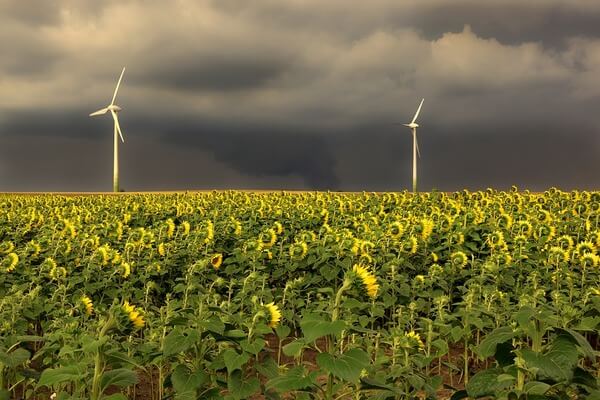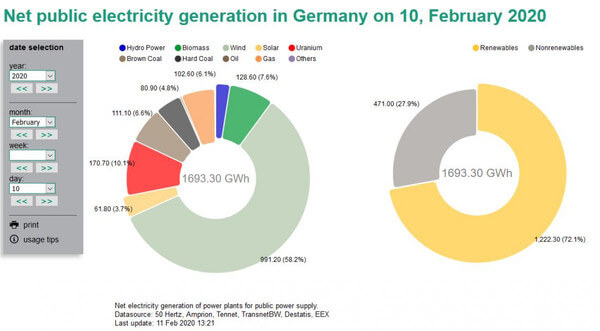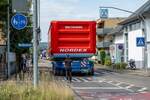News Release from windfair.net
Wind Industry Profile of
Storm Shatters All Records
In the German-speaking countries the storm was called 'Sabine', in the rest of Europe most referred to 'Ciara'. But the consequences were the same everywhere: uprooted trees, objects flying around, heavy rain and wind without end. Now that the cleaning up is in full swing, it is time to take stock. And at least among energy producers, the storm has put on a happy face.
Although wind turbines switch themselves off in certain weather conditions, as blades rotating too fast can have a strong influence on the stability of the turbine, the production of electricity rises sharply before this happens. Only when wind speeds exceed 90 km/h for a certain period of time or in gusts of over 108 km/h do wind turbines automatically switch off and turn their rotor blades into the wind to avoid providing a target for attack, explains Markus W. Voigt, Managing Director of AREAM GmbH, which specializes in investments in renewable energies.
Moreover, turbines installed in Germany must be able to withstand wind speeds of more than 230 km/h. "Our safety measures ensure that no damage occurs even in extreme storms and that we can look forward to high-yielding wind days," says Voigt, whose turbines have already achieved 42 percent of their monthly target in the first ten days of February thanks to Sabine.

The calm before the approaching storm... (Image: Pixabay)
First of all, Great Britain benefited from the strong wind, where the winter storm called 'Ciara' broke records as early as Saturday. According to energy company Drax, 55.74 percent of the island's electricity was drawn from wind power at 2 a.m. Wind energy also dominated the British power supply throughout the day with a share of 44.7 percent.
However, the power of the wind became even more apparent in Germany, where the storm hit land as 'Sabine' on Sunday and Monday and drove wind turbines to new highs. More than 60 percent of Germany's electricity supply during this period was provided by wind energy, as the Agora Energiewende think tank announced to Deutschlandfunk radio after evaluating the data. At times, according to electricity network operator TenneT, approx. 43.7 gigawatts of wind power was fed into the network, surpassing the previous record of 43.4 gigawatts.
Inspired by the winter storm, wind energy in February 2020 has so far accounted for 43% of net electricity generation in Germany, according to data from Fraunhofer ISE. This corresponds to the combined net electricity generation of all German lignite, hard coal, gas and nuclear power plants in the same period.

Image: Fraunhofer ISE
"Wind energy is the mass carrier of the energy transition and the most important form of renewable energy generation in Germany. The feed-in of wind energy has progressed from record to record in recent years. It is important that system integration also functions without problems. The few power outages during the current storm season aren't due to wind energy, but to the fact that flying objects or fallen trees damaged transformer stations or lines," comments Hermann Albers, President of the German Wind Energy Association, on the figures.
Although the storm was a major challenge for the grid operators, as the electricity feed-in was not uniform, Amprion and TenneT reported no major damage.
"The past few days are impressive proof that the grid can handle significantly more renewable energies. In order to be able to continue to exploit the full potential of our technology in the future, we need a quick entry into storage solutions and direct supply options for flexible industrial and commercial customers. In addition, a repowering and continued operation strategy for plants that will be excluded from the EEG remuneration system from 2021 onwards will be required within the next few months. In view of the rising demand for electricity in all sectors, these plants will continue to be needed in the future," says Albers, looking straight ahead. Because the next storm is sure to come.
- Author:
- Katrin Radtke
- Email:
- press@windfair.net
- Keywords:
- storm, Sabine, Ciara, energy production, Europe, UK, Germany, association, wind turbine, energy, wind speed, hurricane


























